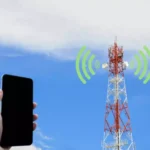
What are they?
Virtual networks have now become very popular and you may be using one without even knowing it. Most carriers will offer you a high price for the services they provide due to overhead costs. Maintenance to towers and expanding infrastructure also cost you a premium. The main carriers in the United States that you may already know are AT&T, Verizon, T-Mobile, and Sprint have their own towers and infrastructure that they operate on and provide you service directly. MVNOs or “Mobile Virtual Network Operators” operate as their own company of service while using the infrastructure of the big carriers or termed here as “Macro-Carriers.” They exist virtually as their own networks without having physical towers.
Operation Comparisons
As far as operation and functionality, these companies are not all that different side by side. All differences are behind the scenes that most people won’t need to know. On the technical side, all carriers use a different set of the same frequencies or “cellular highways” to send information. With a virtual network, a company will buy some of the bandwidth of that frequency or highway and sell it at a cheaper price. The MVNO will then use the frequencies it chooses on the network or networks it wants and piggy-backs off of a Macro-Carriers infrastructure. These carriers are able to take advantage of the new LTE technologies and current 4G technologies, but speed and performance are where they differ.

Performance
Performance vs price is the major comparison between a Macro-Network and a virtual network. Some companies will use a limited amount of bandwidth and throttle the maximum amount of speed available for that carrier or limit the coverage areas of the current capabilities of the Macro-Carrier counterpart. Should the Macro be congested, the limited bandwidth on the Micro could be throttled even more. With calls using the newer VoLTE standard on some MVNO’s, they will essentially function the same way. Data will function the same way but companies can “cap” your speed and limit how much data you use. Different carriers will have different plans that may be unlimited or have a better data package. It all depends on their price per package.
Price
For the ones who budget, these types of carriers are the reason that most consumers will switch from one of the Macro-Networks to a Virtual network. A big reason why the price decrease is the lack of physical maintenance of infrastructure. Another is that of less paid funding for advertising that most big carriers go out of their way for voicing their services. Additionally, some virtual networks don’t provide handsets via contract. The methods for this let the consumer that has paid off their phone from a big carrier to come to a virtual one and use the cheaper services that they offer.
Will a Virtual Network Work With a Booster?
In one word, yes! With the similar frequencies comparing Macro with Virtual. In most cases, it will work just as well as using a Macro network. If you’re in need of boosted signal for your carrier, feel free to call or email us through our contact page here or use our site demonstration form here to get in touch with one of our representatives to talk about an on-site demonstration of boosted signal and a system designed just for you!





